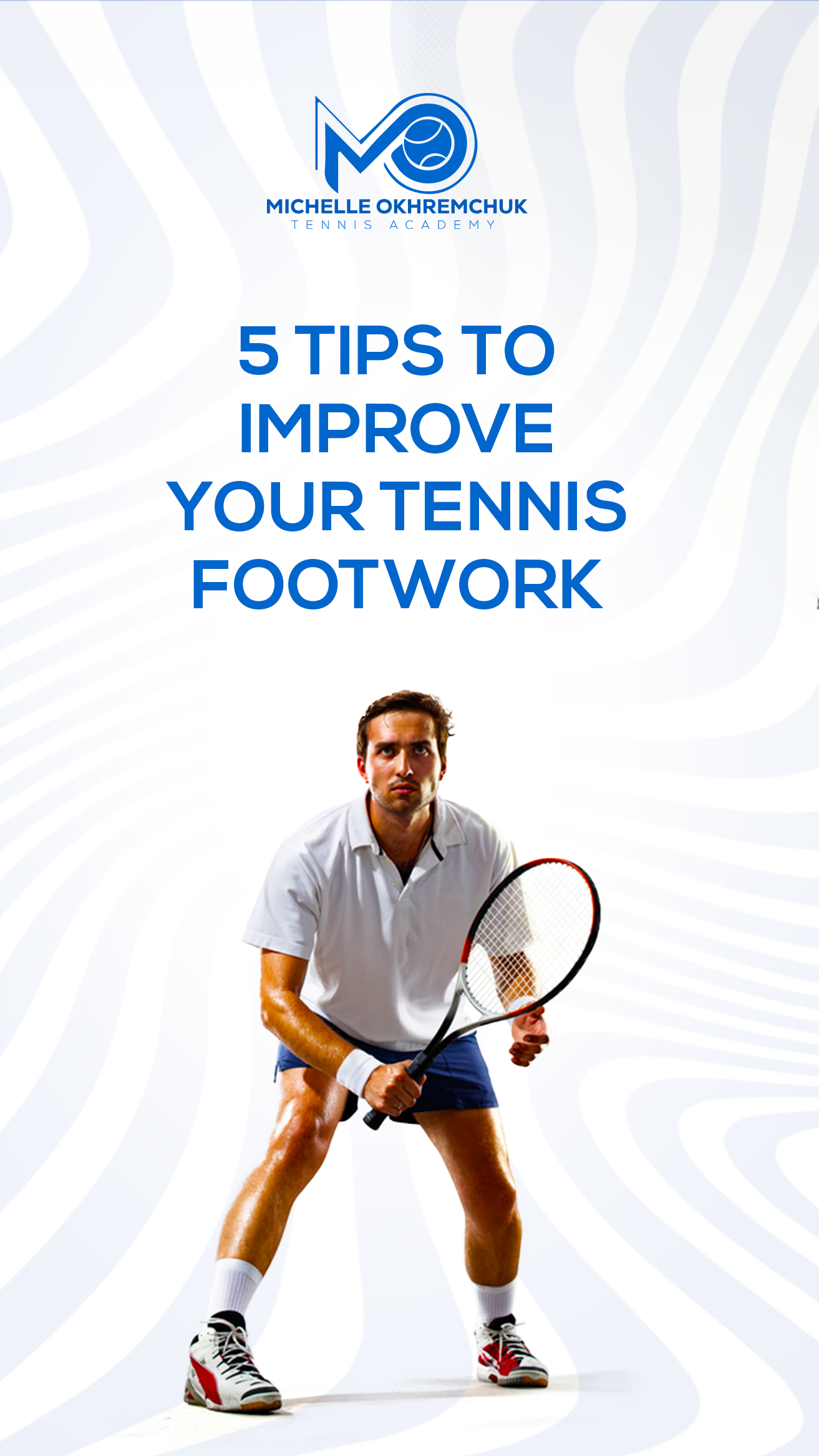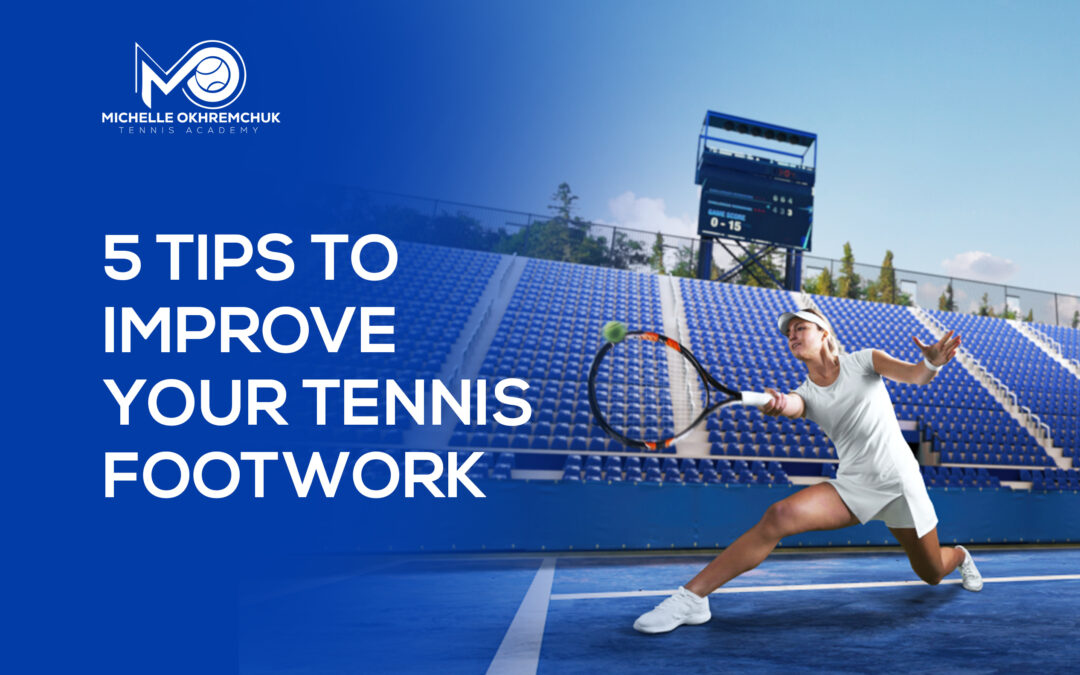Improving your tennis footwork is a critical aspect of enhancing your game, and yet it often goes overlooked by many club and junior players.
Have you ever wondered how professional players achieve their remarkable agility on the court? The answer lies in their dedicated off-court training, involving both quantity and quality practice.
Professionals consistently work on specific footwork patterns tailored to their playing style, which they deploy during match situations. The good news is that you, too, can elevate your on-court mobility by practicing the right drills.
The following five steps will guide you in mastering your tennis footwork and help you to move around the court more efficiently and effortlessly.
The Split Step
The split step is a fundamental but often misunderstood aspect of footwork. Its essence lies in being airborne when your opponent strikes the ball. To achieve this, initiate your split step early, ensuring you’re in the air when your opponent makes contact with the ball.
This proactive approach allows you to react swiftly in any direction, enhancing your overall responsiveness on the court. While adjusting to this change may feel uncomfortable initially, the long-term benefits are well worth the effort.
Maintain a Wide Base
Maintaining a strong and wide base with your feet positioned outside of your shoulders is crucial. Many players make the mistake of narrowing their stance after executing the split step.
When playing dynamically, strive to establish a broader base. Strengthening your legs through targeted tennis fitness exercises, such as single-leg squats, single-leg glute bridges, and Bulgarian squats, can help you achieve this.
Begin without weights to focus on proper technique and avoid over-fatiguing your body. If you’re unsure about exercise execution, seek guidance from a professional tennis fitness trainer.
Stride with Purpose
While there’s a place for small adjustment steps, practicing larger steps can be highly beneficial. Concentrate on making a strong initial move immediately after the split step.
This will enable you to employ the correct wide footwork, particularly for groundstrokes like the one-handed backhand.
Mastery of this skill allows you to reach the singles sideline with just two substantial steps, saving time and enhancing your movement rhythm. Remember to balance yourself before and after striking the ball.
Shadow Strokes Practice
Practice shadowing tennis movements without a ball to refine your footwork and technique. This low-pressure exercise can improve your overall movement and rhythm. Utilize this approach when you have no one to play with, whether it’s at a public park or in your garage.
By practicing different footwork patterns, such as inside-in and out forehands, you’ll enhance your movement’s fluidity, develop anaerobic capacity, and establish effective on-court movement habits.
Investing time in shadow strokes, as seen in the routines of professional players, can significantly benefit your game.
Develop Rhythm
The final step involves mastering rhythm and timing to arrive at the ball’s contact point effectively. When facing a fast-moving ball, adjust your speed to reach it on time.
Conversely, when dealing with a slower ball, avoid rushing and align your movements with the ball’s pace. Developing rhythm extends beyond movement; it also influences your groundstroke technique.
Conclusion
By following these five steps, you’ll gain mastery over your tennis footwork. This will result in enhanced speed, rhythm, timing, and tempo on the court, leading to more enjoyable matches and increased success.
While it may seem like a substantial challenge, start by focusing on each footwork aspect individually, and monitor your progress through match recordings.
Assess the time and effort you invest in your footwork training, and prioritize mastering the fundamentals before progressing to more advanced techniques.


